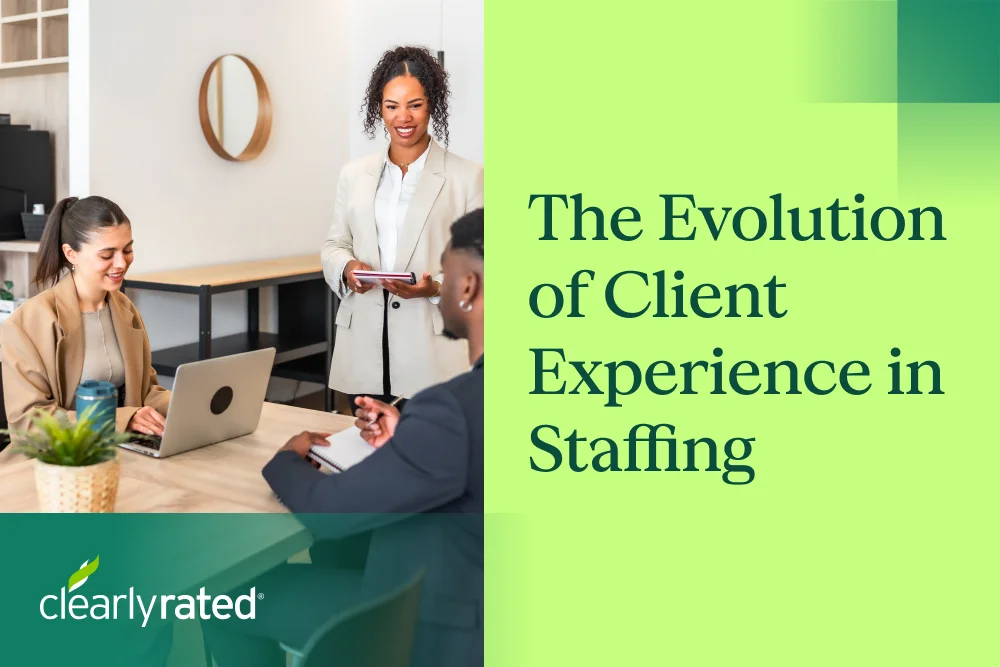Client Feedback vs. Project Feedback: What AEC Firms Need to Know
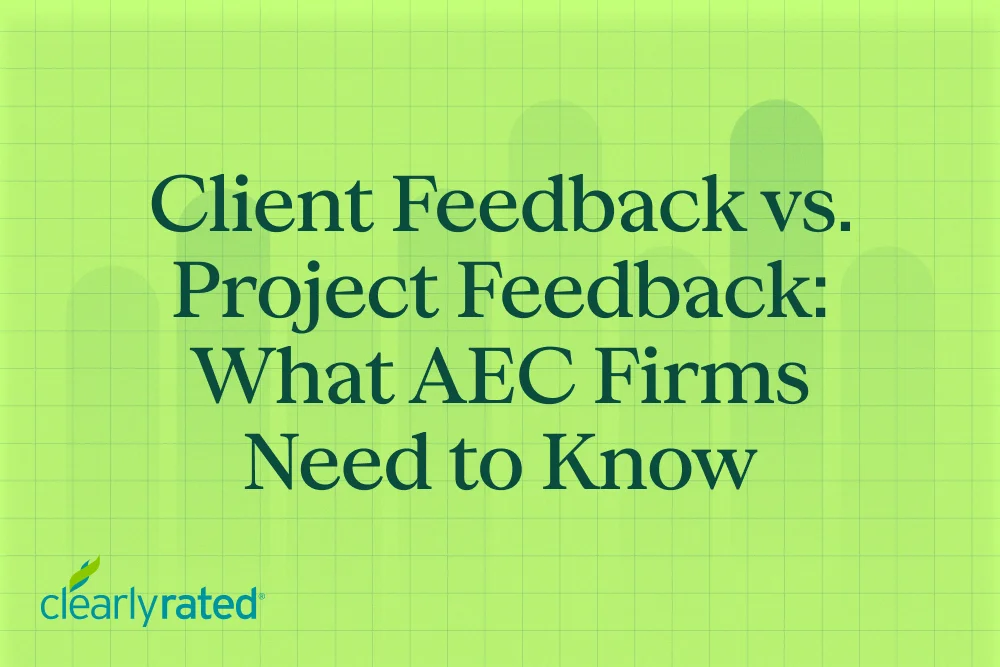
- Many AEC firms mistake project feedback for client feedback, missing key signals that impact retention and trust.
- Project feedback tracks delivery quality, while client feedback reflects loyalty, communication, and brand perception.
- Collecting both at the right time, across milestones and relationships, helps teams adjust and avoid preventable issues.
- Our Client Savvy platform integrates feedback into the workflow, transforming insights into growth, loyalty, and repeat business.
It is easy to feel confident that your firm already gathers valuable feedback simply by sending project close-out surveys for AEC firms once the project is finished.
You might hear a project manager say, “We asked the client how we did, and they said it went fine.” Someone else on the team might even say, “We’ve worked with them for years. If they had a problem, we’d know by now.”
But here’s the question that matters most: Is that enough?
Many firms still don’t realize there’s a clear difference between client feedback vs project feedback in AEC, and treating them as the same thing means they miss real signals that affect long-term relationships.
This article explores how client feedback goes deeper than technical delivery, why project feedback in AEC has its place but can’t stand alone, and how firms using platforms like ClearlyRated are bridging both with better systems.
Definitions & Distinctions: Client Feedback vs Project Feedback
Client feedback in AEC refers to the input a firm receives about the overall relationship, communication, trust, and value perception from the client’s point of view. It often reflects:
- How clients feel about the brand
- How likely they are to recommend the firm
- If they view the partnership as strategic or transactional
It directly influences an AEC firm’s client experience and long-term customer retention.
On the other hand, project feedback in AEC focuses on how each project was delivered. It includes client opinions on task execution, milestone clarity, deliverable quality, team communication, and responsiveness. This type of input is usually collected through milestone feedback or project close-out surveys and is often tied to specific phases or handovers.
Firms often confuse the two. But once you compare them side by side, the difference becomes easy to understand.
One client might say, “Your team is always responsive and easy to work with,” which is a clear sign of relationship feedback in architecture, engineering, and construction.
Another might say, “We never got the phase two update until we asked for it,” which reflects project feedback in AEC. You need both to understand what’s working fully and what’s not.
Why Both Client Feedback and Project Feedback Are Essential in AEC
AEC projects rarely move in a straight line. You deal with shifting timelines, changing scopes, new stakeholders joining mid-way, and multiple project phases all happening in motion. If your team only collects feedback once a project wraps up, you’ve already lost the chance to fix what didn’t go well.
That’s why using both client feedback and project feedback in AEC gives you a better handle on performance, risk, and relationships.
Let’s say a client flags something like, “The final drawing set felt rushed, and we weren’t kept in the loop.” That kind of feedback lands too late in a close-out survey.
But if you gather project-level feedback in AEC at critical milestones like schematic design, procurement, or handoff, you can fix small gaps before they turn into big reputation hits. Milestone feedback in AEC also keeps delivery teams accountable and lets project managers hear what’s working or falling short in real time.
Now, zooming out, client-level feedback gives you insight that goes beyond individual projects. For example, a senior client might say, “Your team always makes us feel heard, even when things go off track.” That kind of feedback shapes your firm’s reputation and influences whether clients come back or recommend you to others.
The difference between project feedback and client feedback becomes clearer when looking at how each affects your business:
- Project feedback focuses on specific phases, deliverables, and team performance during the project.
- Client feedback covers overall relationships, loyalty, firm reputation, and long-term satisfaction.
The 2025 Benchmarks, Insights, and Trends: Client Experience in the AEC Industry report proves the need for both. In our report, we found that:
- 78% of buyers say a seamless experience influences their choice of firm.
- 68% say strong communication and relationships weigh as heavily as technical skills.
These numbers prove that doing great work alone will not guarantee client loyalty if the experience feels disconnected or frustrating.
Many firms make the mistake of relying only on end-of-project surveys. That means they often miss early warning signs or deeper patterns in how clients view the firm overall. If clients feel like they always have to chase them for updates, that gap in trust can grow over time, leading to fewer high-quality referrals and even lost clients.
Similarly, generic survey platforms also don’t fit AEC workflows well. AEC firms require tools built for their unique pace and phases, which handle both project and client feedback together. The best firms treat client feedback and project feedback as two essential pieces that protect revenue, strengthen relationships, and boost long-term client retention.
💡Also read: 13 Best NPS Software Platforms & Tools to Use in 2025
When & How to Collect Feedback
Most firms think a single survey at project end captures the feedback they need. That assumption leaves gaps where clients felt irritated or left unanswered.
Let’s explore how and when to collect feedback, ensuring your firm captures both subtle cues and significant themes.
Collect project feedback at key milestones
You should ask for project feedback in AEC at set moments during a project life cycle, such as kickoff, first deliverable, mid-point, near completion, and closeout. For example:
- At kickoff, consider asking questions like:
- Are we aligned on the project goals, timeline, and your expectations for success?
- Do you feel we’ve clearly outlined how and when we’ll communicate with you?
- After the first deliverable, this is your opportunity to identify and address any early misunderstandings or quality issues before they escalate. So, ask questions like:
- Did the first deliverable meet your expectations in terms of quality and accuracy?
- Were there any parts you found unclear, confusing, or different from what you expected?
- Mid‑point feedback gives you space to adjust if clients feel pacing or coordination lag. At that time, ask:
- How satisfied are you with the progress and pacing of the project so far?
- Do you feel any adjustments are needed at this stage to get back on track?
- Near-completion feedback highlights concerns that you can still address and correct:
- Are there any outstanding concerns you’d like addressed before the project wraps up?
- Is there anything we can do right now to improve your experience before closeout?
- The project closeout offers a complete retrospective on delivery, responsiveness, and outcome. Here, you must ask:
- How well did we deliver on your original goals and expectations?
- Would you recommend our team to others based on your experience with this project?
Ask for client feedback at critical moments
For AEC firms, client feedback shouldn’t be a one-time exercise. Conduct a baseline survey annually to understand how clients perceive your firm overall by measuring satisfaction, loyalty, and NPS to track sentiment year over year.
Then, gather feedback at pivotal moments, such as after completing multiple projects or during contract renewals. These checkpoints reveal how relationships evolve and highlight opportunities to strengthen trust, loyalty, and repeat business.
Craft questions that drive action
Once you’ve decided when to collect feedback, the next step is asking the right questions. The goal is to uncover actionable insights that your team can act on, rather than just confirming what you already know.
Try framing your questions to explore processes, challenges, and relationships rather than surface-level satisfaction:
- What phase of the project experienced the most communication gaps and why?
- How well did our team understand your goals throughout the project?
- What could we have done differently to improve your experience?
- How likely are you to work with us again on a similar project?
Use AEC client feedback software tools that support branching logic so follow-up questions go deeper based on a client’s response.
Segment respondents by role
To capture a complete view of performance, gather feedback from different stakeholder groups instead of relying on a single source. A well-rounded mix of perspectives helps you balance client feedback vs project feedback in AEC for a more accurate picture.
Segment your respondents in this way:
- Core client contact: Shares insights on communication, transparency, and strategic alignment
- Project team members: Provide input on delivery coordination, deadlines, and execution quality
- Subconsultants or specialty consultants: Highlight dependencies, timing issues, or collaboration challenges
This kind of relationship feedback in architecture, engineering, and construction reveals both strengths and blind spots. Building a structured system that triggers milestone-based and regular client feedback ensures you’re acting on reliable, timely signals that drive meaningful improvement.
Why a Purpose-Built Platform for Client and Project Feedback Matters
Many AEC firms start their feedback journey with familiar tools like SurveyMonkey or Qualtrics. These generic platforms can collect survey data, but they miss the elements necessary in AEC firms: timing, accountability, and follow-through.
Here are common limitations AEC firms face when they use standard survey tools:
- No milestone alignment: Non-niche tools fail to match surveys with project checkpoints, resulting in client sentiment being collected too late to make a difference.
- Lack of closed-loop workflows: Feedback is gathered but rarely acted on because there is no system connecting it to the people responsible for follow-up.
- Limited scalability: Most tools require manual survey deployment and tracking, which slows teams down and limits how many clients they can reach.
- Seat-based pricing: Access is restricted to a few users, which stops firms from creating a feedback culture across the organization.
- Standard survey templates: These questions rarely resonate with AEC clients, making participation feel transactional and impersonal.
- Integration struggles: These tools often rely on outside consultants for setup or data integration, which adds extra cost and complexity.
When firms use off-the-shelf tools instead of purpose-built platforms for AEC, consequences run deep.
At ClearlyRated, we’ve built our platform specifically for professional services firms, with the unique pace and pressure of AEC projects in mind. Our tools make feedback an integral part of the workflow, turning client interactions into long-term relationships.
Our solution includes:
- Milestone-based survey templates that automatically trigger feedback at key stages of a project
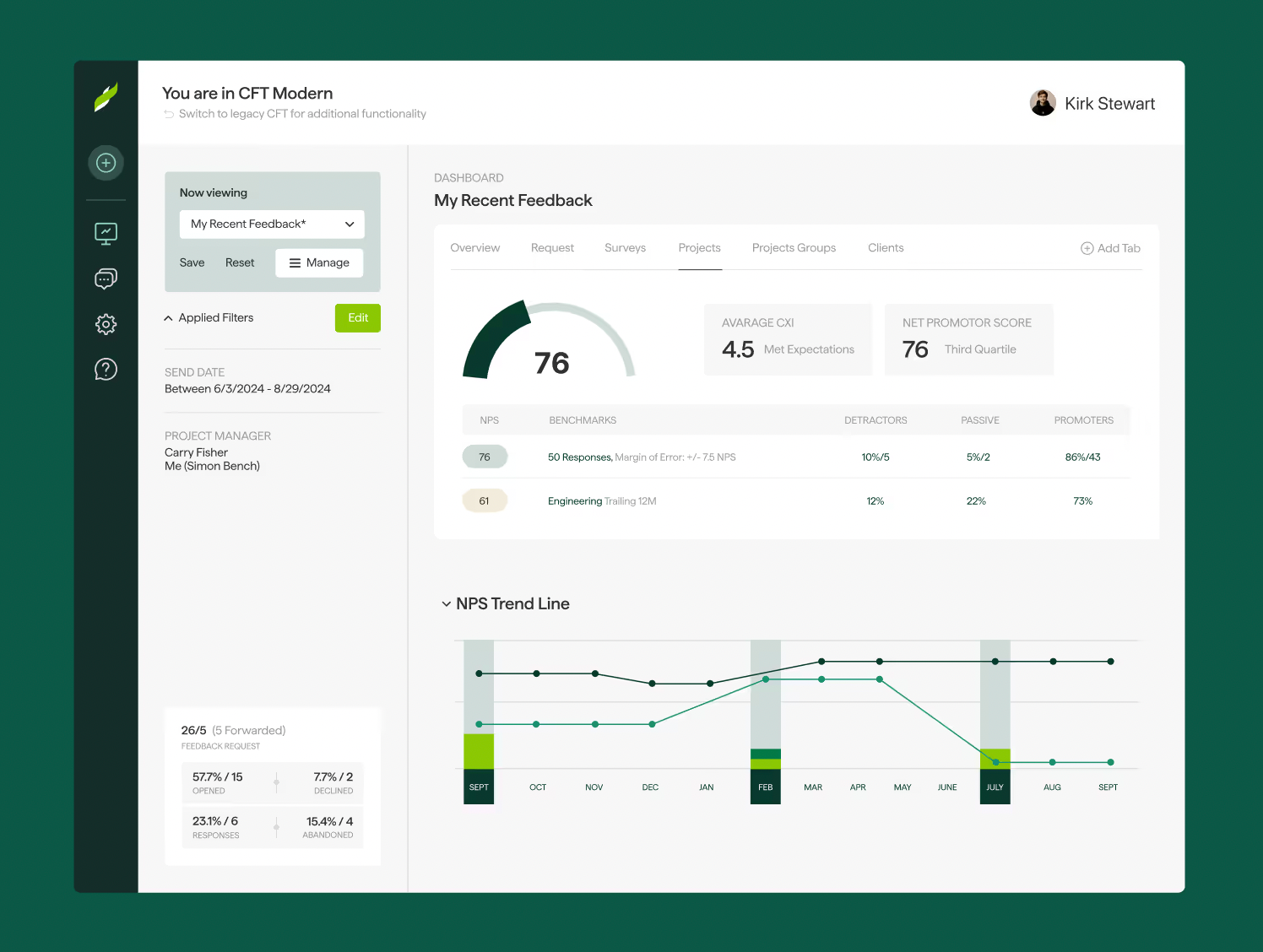
- Real-time dashboards and alerts enable teams to act quickly when a client raises a concern
- Integration with CRM and ERP systems like Deltek and Unanet for a connected workflow
- Closed-loop tracking to confirm that every issue raised has been addressed
- Benchmarking and comparisons across clients, projects, and industry peers for better insights
These features turn everyday feedback into actionable intelligence that drives loyalty and growth.
Consider a mid-sized engineering firm that moved from a generic survey tool to ClearlyRated. Within three months, response rates doubled, feedback administration time dropped by 60%, and two critical client concerns were uncovered and fixed before they escalated. A year later, repeat business had climbed by 18%.
As one client said,
“Before ClearlyRated, we only had a once-a-year survey. Now, clients can share feedback in real time, and we’ve made changes that improved everything, from project delivery to billing support.”
Another long-term partner shared,
“We’ve worked with ClearlyRated for over a decade because the platform keeps evolving. Every year, we find new ways to use the data to improve service quality and client satisfaction.”
The results speak for themselves. Firms using our Client Savvy platform have seen net promoter scores (NPS) rise by 17 points on average. Eighty-three percent of at-risk clients were retained through faster, more accountable follow-ups. Some firms even generated $1.8 million in new business from referrals after identifying and activating their happiest clients.
Implementation Guide and Roadmap
Building a feedback program across an AEC firm doesn’t happen overnight. You need a simple, well-planned path that helps you test, learn, and grow confidence before expanding it across every client and project.
Once you start seeing patterns in responses, it becomes easier to act fast and share results that strengthen relationships and win more business.
- Start with a pilot: Begin with one or two projects and a client survey that captures both project and relationship feedback in architecture, engineering, and construction. Use this phase to fine-tune survey length, timing, and tone before expanding.
- Define metrics and success criteria: Determine what constitutes success early on. You might track response rate or feedback action rate. Teams that clearly define CX metrics make smarter choices about where to improve and which results matter most to client relationships.
- Train project teams: Teach your project teams how to confidently ask for feedback, empathetically follow up, and constructively use the results. A short training session can transform how teams talk about quality, delivery, and communication with clients.
- Roll out firm-wide and iterate: Once the pilot shows steady results, roll out the program across all projects and regions. Refine questions, survey timing, and response handling to ensure your AEC client feedback software consistently delivers valid data without user fatigue.
- Use results in marketing and BD: Turn positive project feedback in AEC into short testimonials or highlight recurring success themes in proposals. When future clients see authentic quotes from satisfied partners, it builds instant credibility and strengthens your firm’s reputation for client-focused delivery.
Turn Feedback into a Competitive Advantage
For AEC firms, feedback isn’t a side task you check off after project close-out. It’s a living, strategic asset that fuels stronger client relationships and smarter project delivery. When you compare client feedback vs project feedback in AEC, you uncover insights that go beyond surface-level satisfaction and reveal the real story behind every outcome.
Now’s the time to take a closer look at your current approach. Ask yourself questions like:
- Do your surveys capture relationship feedback, or do they stop at project-level feedback in AEC?
- Are you gathering actionable insights or storing unused responses?
If you’re ready to move from collecting opinions to creating impact, explore an AEC feedback platform built for firms like yours. You’ll see how structured feedback transforms client satisfaction into measurable growth.
Have a story to share? Tell us what worked, or what didn’t, and help others strengthen their own feedback process.
Get started today and start turning feedback into your firm’s biggest growth engine.
FAQs
1. Which feedback type tends to get overlooked in AEC, and why?
Most firms forget to collect feedback during key early milestones. Clients often speak up only at the end, when it’s too late to act. This results in missed fixes, misunderstandings, and lost trust.
2. How early in a project should you collect feedback?
You should start collecting feedback as early as the project kickoff. Asking simple questions early helps identify misalignments in goals, communication, or deliverables before they escalate into serious client frustrations.
3. How to integrate feedback tools with existing systems (CRM, ERP, PM tools)?
ClearlyRated integrates with platforms like Deltek, Salesforce, and Unanet through an open API. That means feedback seamlessly integrates into your existing systems, workflows, and reporting, eliminating extra admin overhead for your team.
4. What’s a realistic ROI of deploying a feedback system in an AEC firm?
Firms using our platform report stronger retention, more referrals, and faster response to at-risk clients. Many reduce admin work, increase repeat business, and prevent churn, all within the first few months of adoption.
FAQs


%5B1%5D.webp)
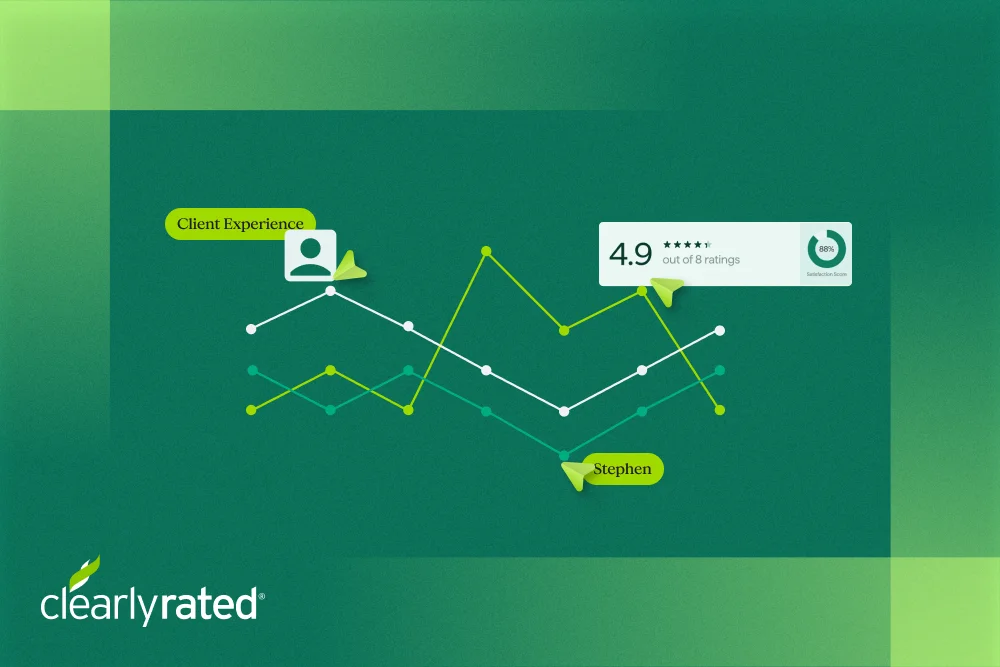


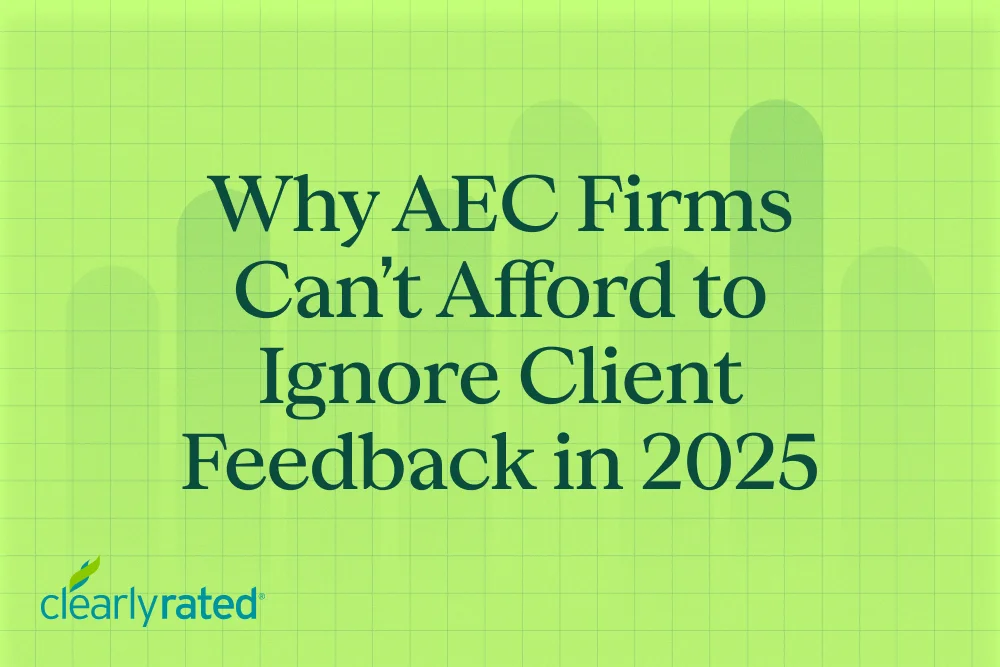


.png)




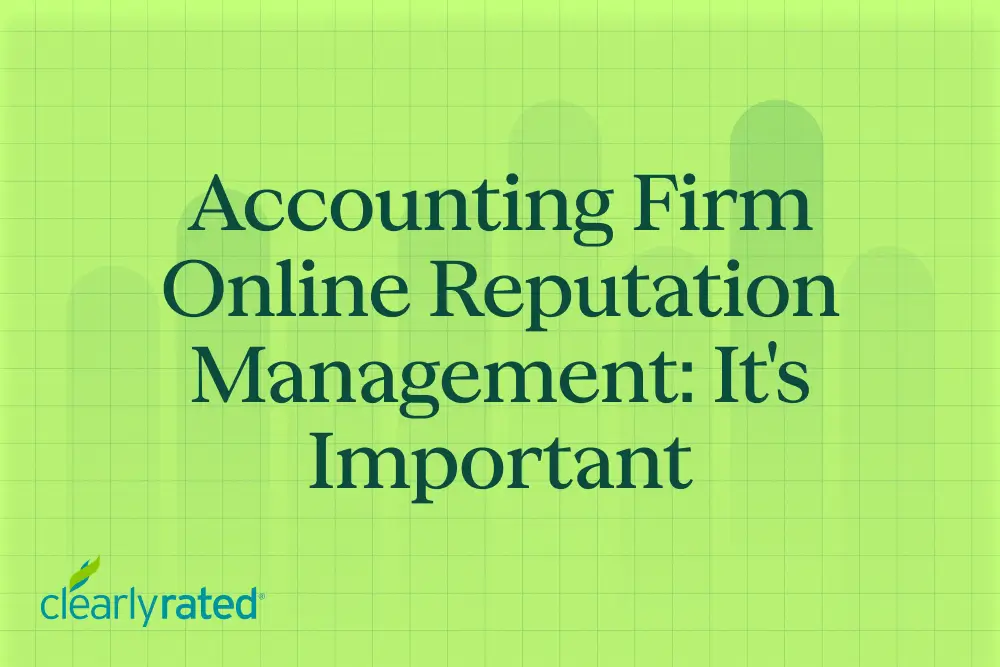
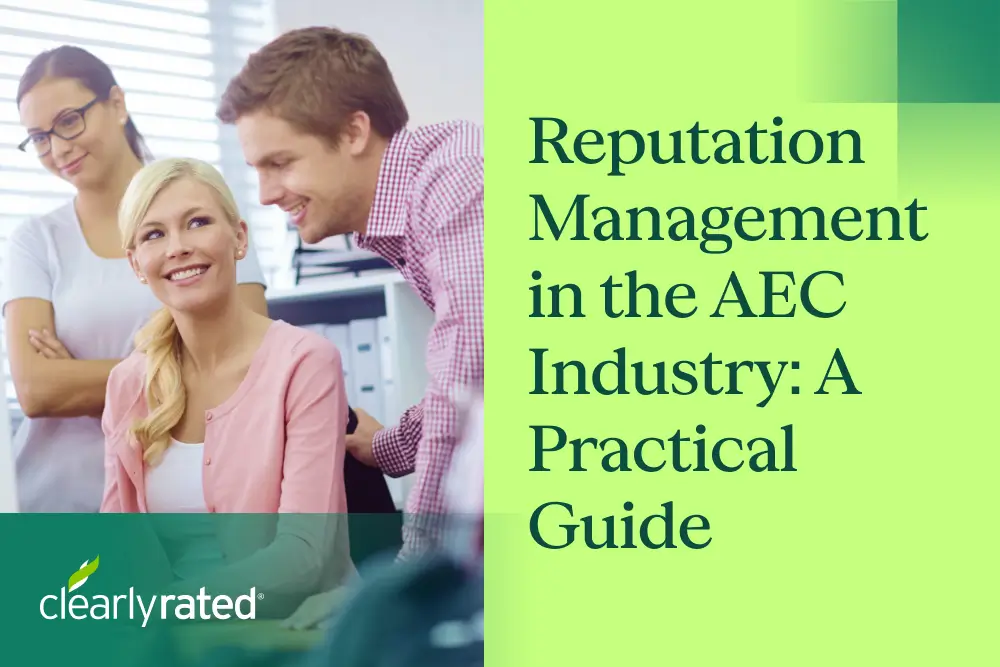

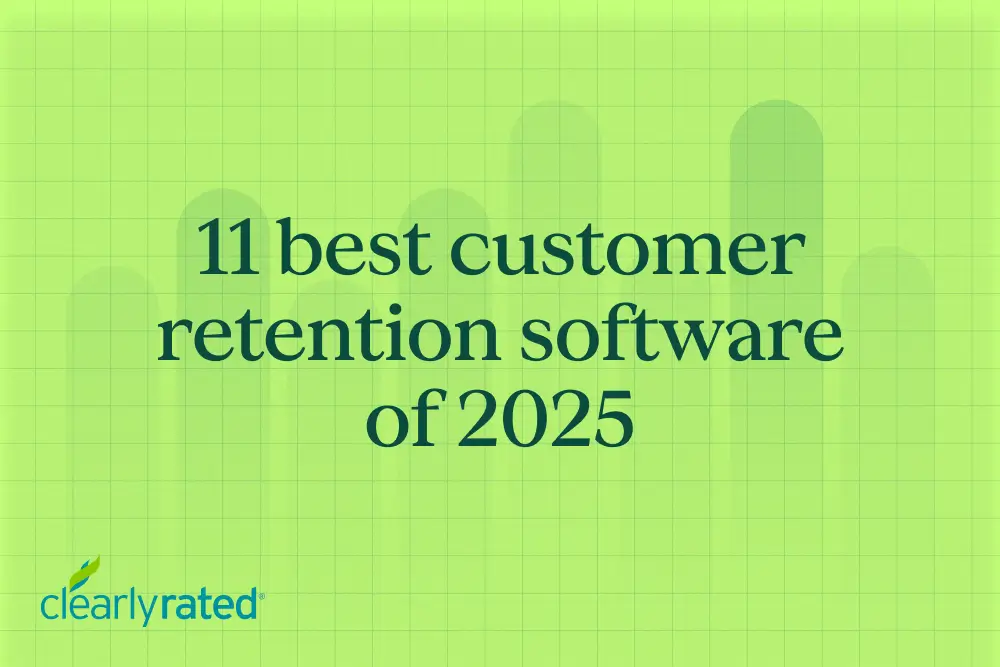

_%20The%20Ultimate%20Guide.png)
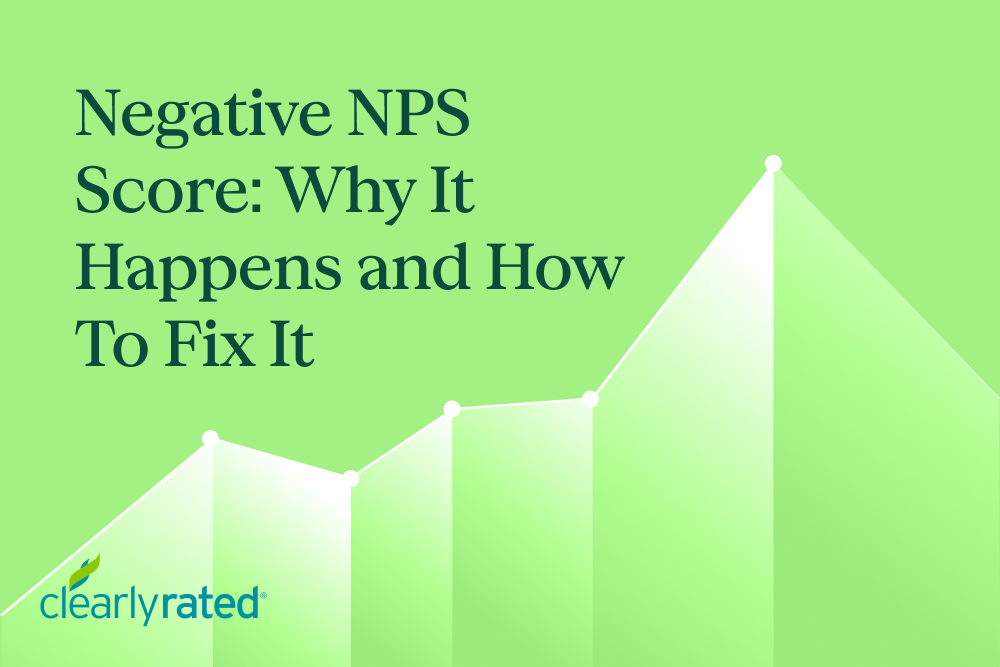
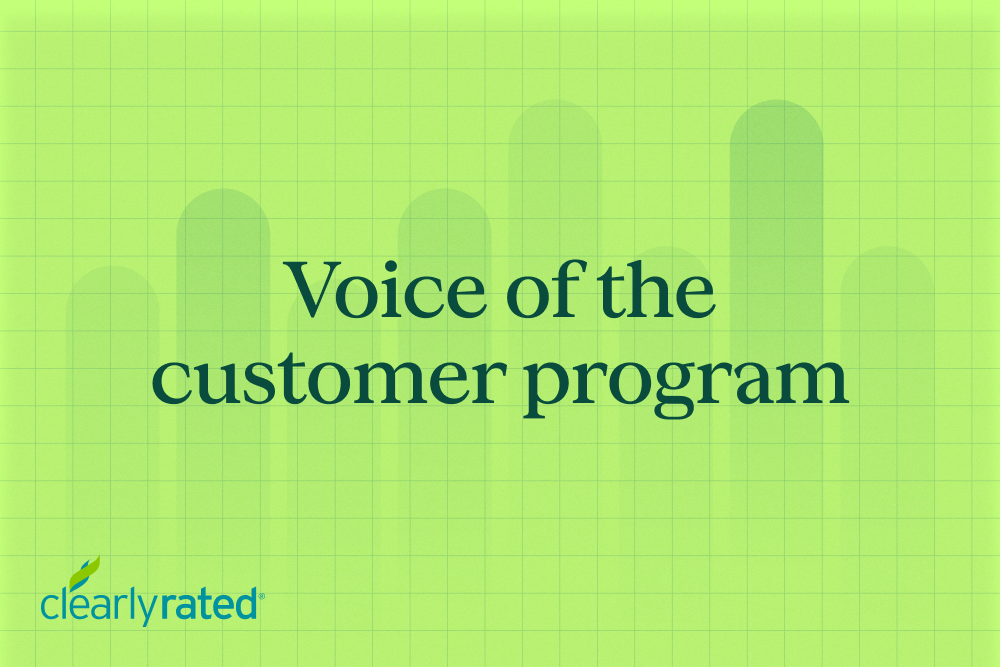
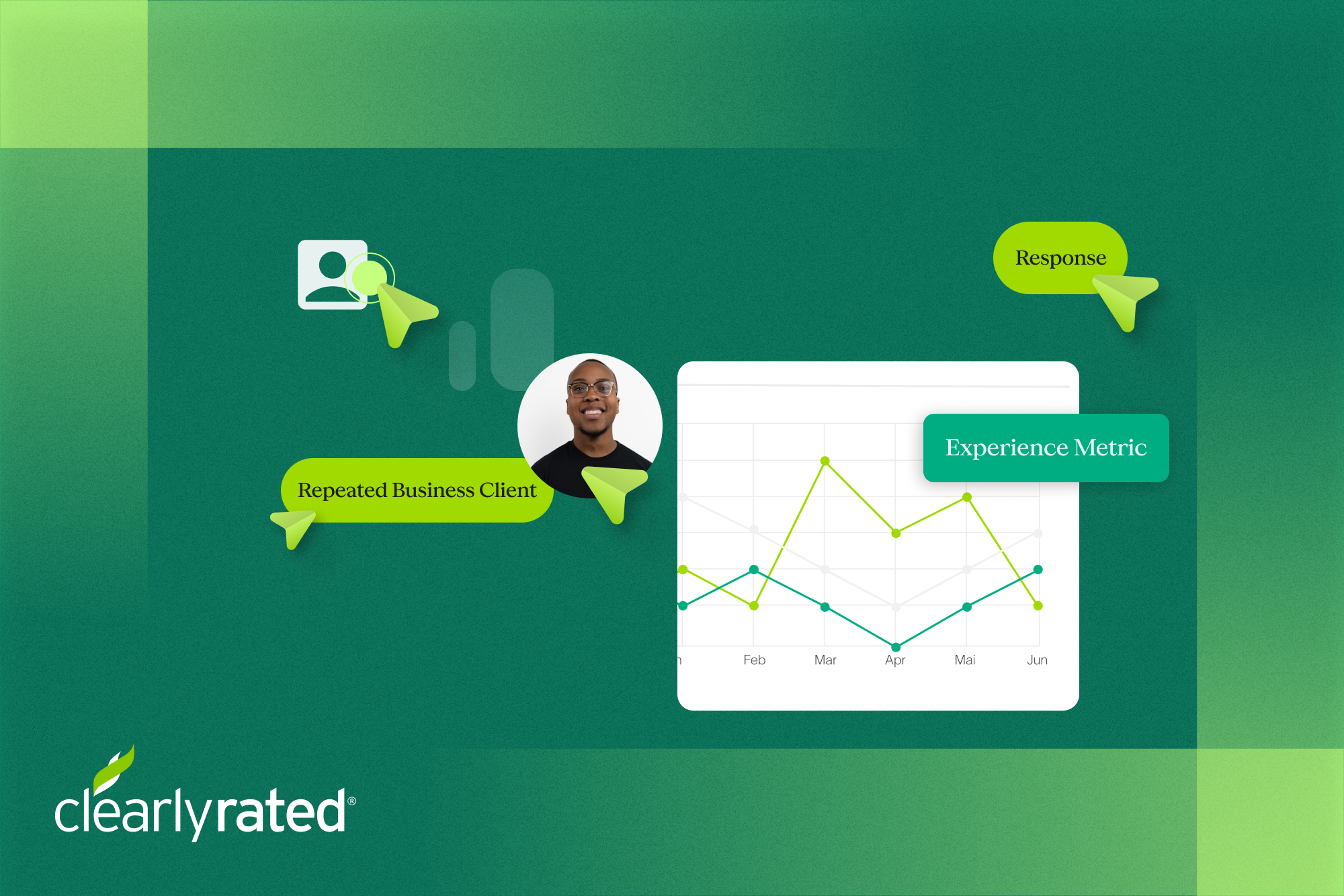
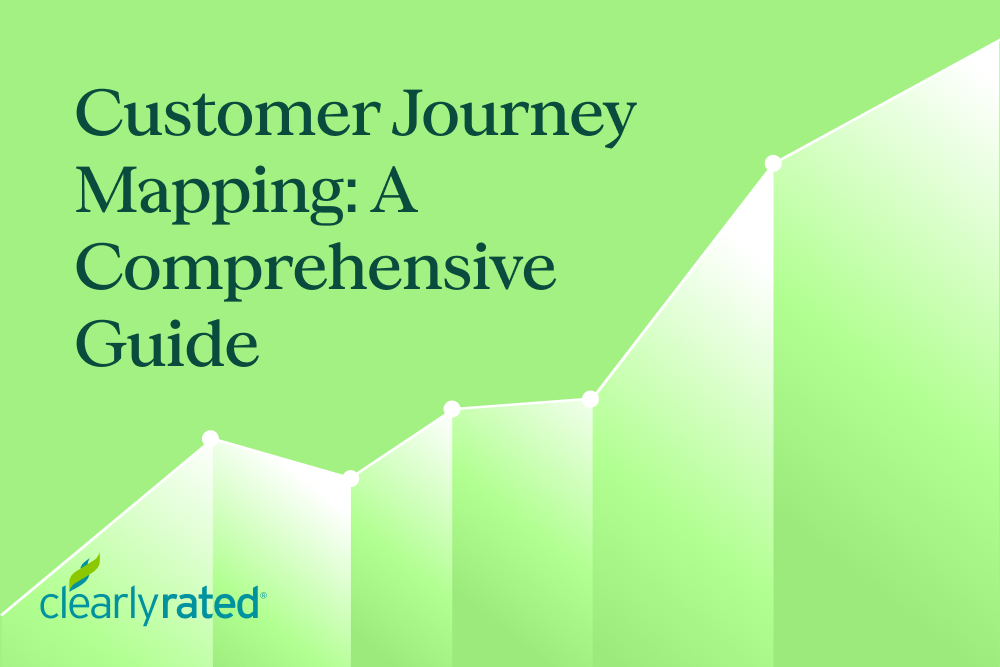

.png)




















%20in%20the%20Workplace.png)










.png)

%20and%20how%20can%20you%20increase%20it.png)
_%20A%20Step-by-Step%20Guide.png)

.png)
.png)




_.png)



%20in%202028.png)


_%20The%20Ultimate%20Guide%20(2024).png)




